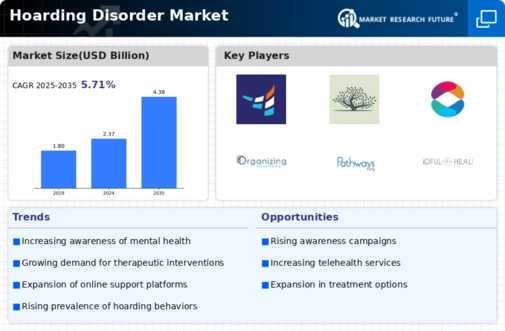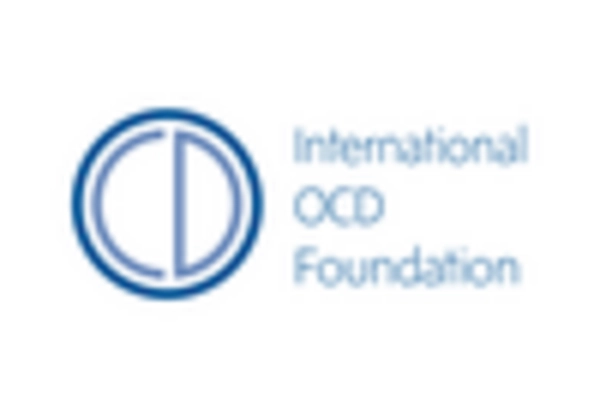Advancements in Therapeutic Approaches
Innovations in therapeutic methods for treating hoarding disorder are shaping the Hoarding Disorder Market. Cognitive-behavioral therapy (CBT) has emerged as a leading treatment modality, demonstrating effectiveness in reducing hoarding symptoms. The integration of technology, such as virtual reality and mobile applications, is also being explored to enhance therapeutic outcomes. These advancements not only improve patient engagement but also broaden the scope of treatment options available. As new therapies are developed and validated, the market is likely to expand, attracting both healthcare providers and patients seeking effective solutions. The ongoing research into pharmacological treatments may further diversify the offerings within the market.
Rising Prevalence of Hoarding Disorder
The increasing recognition of hoarding disorder as a mental health issue contributes to the growth of the Hoarding Disorder Market. Recent estimates suggest that approximately 2-6% of the population may experience hoarding behaviors, indicating a substantial number of individuals requiring intervention. This rising prevalence drives demand for specialized treatment options, including therapy and medication. As awareness grows, more individuals are likely to seek help, thereby expanding the market. Furthermore, the stigma surrounding mental health issues is gradually diminishing, encouraging more people to address their hoarding behaviors. This trend is expected to continue, potentially leading to a larger market for services and products aimed at treating hoarding disorder.
Legislative Support for Mental Health Policies
Legislative support for mental health policies is emerging as a significant driver in the Hoarding Disorder Market. Governments are increasingly recognizing the need for comprehensive mental health care, leading to the implementation of policies that support individuals with hoarding disorder. These policies may include funding for treatment programs, training for mental health professionals, and public awareness campaigns. As legislation evolves to prioritize mental health, it is likely that more resources will be allocated to address hoarding disorder specifically. This supportive environment can facilitate access to care and encourage individuals to seek help, ultimately contributing to market growth.
Increased Funding for Mental Health Initiatives
The allocation of increased funding for mental health initiatives plays a crucial role in the expansion of the Hoarding Disorder Market. Governments and non-profit organizations are recognizing the importance of addressing mental health issues, including hoarding disorder. This funding supports research, public awareness campaigns, and the development of treatment programs. For instance, recent initiatives have led to the establishment of specialized clinics and training programs for mental health professionals. As funding continues to grow, it is anticipated that more resources will become available for individuals struggling with hoarding behaviors, thereby enhancing access to care and driving market growth.
Growing Demand for Professional Organizing Services
The rising demand for professional organizing services is influencing the Hoarding Disorder Market. As individuals become more aware of the impact of hoarding on their lives, many seek assistance from professional organizers who specialize in decluttering and organizing spaces. This trend reflects a broader societal shift towards minimalism and organization, which is gaining traction. Professional organizers often collaborate with mental health professionals to provide comprehensive support for individuals with hoarding disorder. This collaboration not only enhances the effectiveness of treatment but also expands the market for organizing services tailored to those affected by hoarding behaviors.


















Leave a Comment